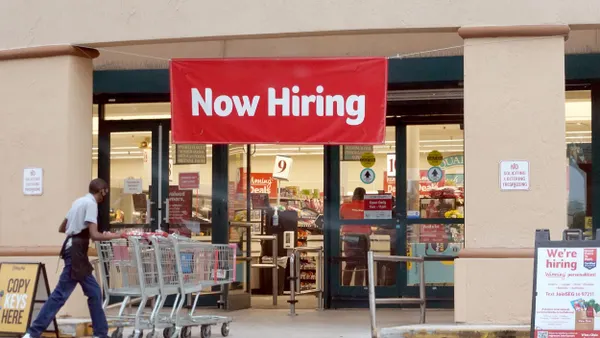Dive Brief:
- LinkedIn is updating its LinkedIn Recruiter and LinkedIn Jobs products, adding onto existing search features for both, company representatives said in a webcast. The features are backed by the company's own artificial intelligence capabilities.
- In coming months, professionals using LinkedIn Recruiter will see an enhanced "integrated search" function that displays potential candidates, much like the site's news feed. Recruiters will be able scroll through and, with one click, either add candidates to an individual folder for a given role (called a "project") or "hide" less-fitting candidates. During a demonstration of the product via webcast, LinkedIn Talent Solutions head of product Josh Jersin said the company had 40% year-over-year growth in job applications posted and 37% year-over-year growth in new hires made on its platform.
- LinkedIn Jobs users will see updates to the way they can view multiple openings on the site, and job seekers will have the ability to add "dream companies" in a new feature that will give them immediate updates when an opportunity is posted by a company they follow. And when filtering jobs in search, users will be able set their location to "remote jobs," making it easier to find listings that are fully remote. A separate update to LinkedIn Salary will post salary ranges for different roles at a given employer.
Dive Insight:
Amid a highly competitive market for workers, HR departments should be mindful of the equally competitive talent solutions market vying to solve their problems. Much of that growth has been in the acquisition of job boards, including big names like Monster and Indeed. But billion-dollar deals for firms like Glassdoor point to the multi-faceted analytical capabilities that providers want to harness.
LinkedIn's user base of more than 575 million understandably results in a large amount of valuable data on how people are searching for jobs, how employers are recruiting those users and the specific skill sets that eventually result in new hires. This may be why the company is deciding to open its data trove to academic researchers.
"HR is increasingly building a strategic view of how they're building winning teams," Jersin said. "We have an ambitious vision to create an even more intelligent and personalized search experience in the future."
But the Microsoft subsidiary isn't alone in the race to improve and simplify the recruiting process; the one-click nature of LinkedIn's revamped integrated search follows an earlier announcement from Google that it would use its AI capabilities to implement one-click recruiting solutions for HR functions, including interview scheduling, on the company's Google Hire app. Both organizations are getting at a well-understood problem: recruiting takes far too long, to the dissatisfaction of all parties in the process.
The recognition of trends in the workplace, like the desire for work-life balance in the form of remote work, is also a result of LinkedIn's data analysis. "We're seeing more employers embrace remote workers, and we want all job seekers and employers to have an easier way to uncover these opportunities to find the opportunity that's right for them," Kumaresh Pattabiraman, LinkedIn's director of product management, said during the webcast. One of the company's biggest goals, he said, is ensuring job seekers and recruiters are having conversations at the right time; "The first step in that is making sure people have the right information."
Correction: This story has been updated to accurately reflect the total number of LinkedIn users.













